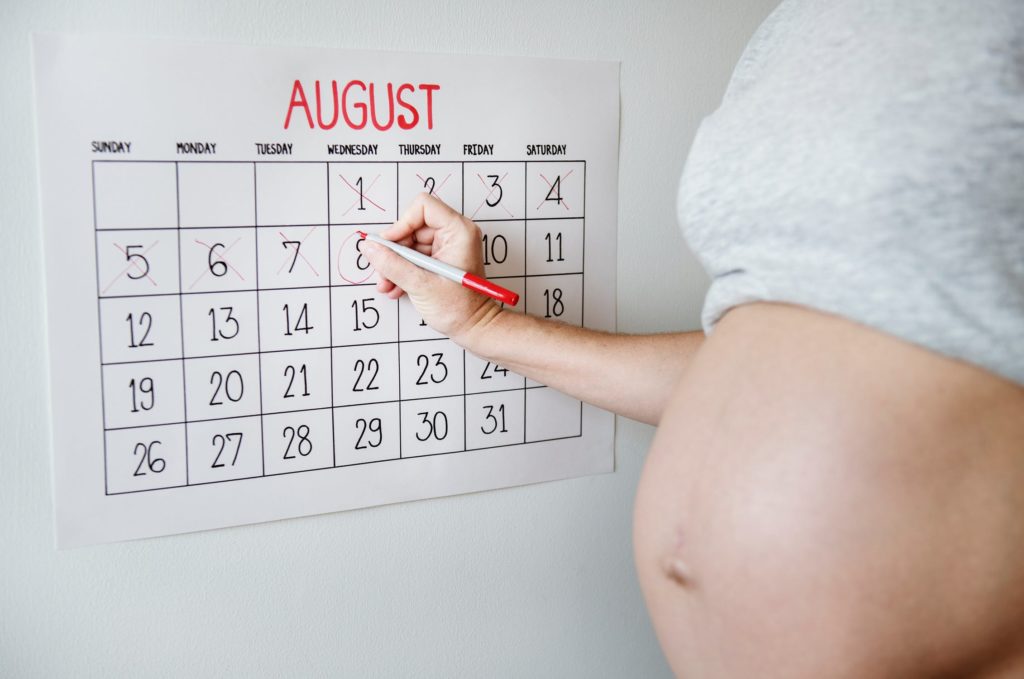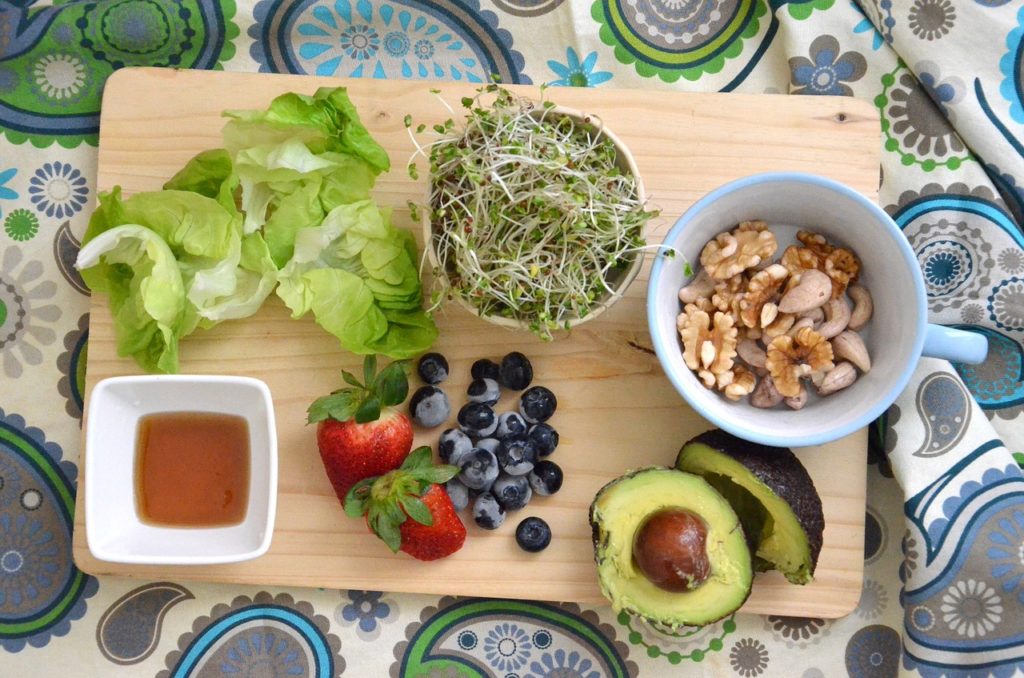
Tips for Picking the Right Pediatrician

When it comes to choosing a stroller for your baby it’s important that you do your homework, as a stroller is one of the most expensive baby gear investments you’ll make.
Many parents end up purchasing several styles and models of strollers because after their purchase they realize that the stroller didn’t quite meet their needs or expectations. Instead of going through a string of strollers, do your research and make a wise investment.When stroller shopping, consider these 5 tips:
Premature birth may worry you as it worries most expectant parents but becoming overdue can also bring its own concerns and difficulties. As you become larger, sleeping can become more challenging. It becomes increasingly more difficult to get into a comfortable position as does breathing as your lungs become more crowded due to your overgrown uterus. If your baby stays in too long then there are risks associated with this, most commonly that your baby could pass meconium. If you find yourself overdue and are seeking advice to naturally help induce labor then the following is a list of ideas to do exactly that.
1. Sex– is often prescribed by doctors to help induce labor because the prostaglandins in semen help soften and prepare the cervix to dilate.
Herbs – hundreds of years ago midwives used herbs to prepare mothers for pregnancy, labor and birth. This was before the invention of pitocin. You must be very cautious with herbs of any kind as they can cause great damage if the correct dosage is not administered. Black cohosh, available in capsules or teas is commonly used to induce labor and can be with or without alcohol. During birth, black cohosh can help strengthen and regulate uterine contractions. Other herbs which have similar effects are red raspberry leaf and false unicorn root. These particular herbs have natural chemicals which are released into the woman’s body and stimulate the baby to encourage her to move and get positioned for birth. Herbs should not be used until the cervix is ready to open as they will not work until then. Beware of some herbs which can be dangerous to you or your baby such as aloe vera, bungleweed and pokeroot as these are some of the herbs that can cause premature birth or birth defects. Always consult a doctor before self-medicating with herbs. Primrose oil is used to induce labour as it has a comparable effect to semen in the cervix by softening and ripening it.
2. Castor Oil – is taken by some women as a natural method of bringing on labor. The theory being that the diarrhea and cramping it causes also causes contractions that can induce labor. It is unpleasant to taste but two tablespoons can be mixed into another drink such as a juice. It is advised to consume castor oil in the morning as you will be woken in the night with the cramping and diarrhea if you take it in the evening. There are risks with taking castor oil such as the expectant mother becoming dehydrated because she has diarrhea and also it increases the risk of the baby passing meconium while still in the uterus.
3. Nipple Stimulation – for hundreds of years nipple stimulation has been used by women to help induce labor. It has an effect of releasing a natural form of pitocin called oxytocin. Similarly to pitocin, oxytocin triggers contractions that can bring on labor. This method for naturally inducing labor is only effective near to your due date and when you are ready to give birth. Before forty weeks, it is not advisable to induce labor. The nipples can be stimulated manually or a breast pump can be used. Care needs to be taken as your uterus can become hyperstimulated. Only stimulate one nipple at a time and rest immediately once you notice contractions. Wait at least fifteen minutes after the contractions have stopped before resuming. If you do not get any rest between contractions other problems can arise.
4. Be Active – whilst most doctors advise you to slow down and reduce your activities as you approach your due date, it is also helpful to remain active as long as you do not cause yourself any stress. Walking a wee bit more than usual and slowly swinging your hips from side to side can help induce labor by stimulating your baby and getting her moving into the birthing position. If you fancy some fun, sex is always a good idea as I mentioned before because along with semen helping the cervix to soften, the female orgasm produces a hormone which aids childbirth.
Other methods women have used include acupressure and eating spicy foods, but watch out for possible nausea with spicy food and medical research has not yet supported this idea as definitely being beneficial.
Theme
Deciding on a theme can help you tie all of the party details together. Here are a few kid friendly themes worth considering.
Invitations
Tie the invitations into the theme to help set the mood for the party and let the parents know what type of costumes the kids should wear. By making your own invitations you can have something that is both unique and inexpensive. Here are some ideas for simple invitations you can make at home.
Decorations
Use things you have around the house that go with your theme. Drape the furniture with white sheets for a spooky, abandoned look. Fill recycled jars with water and food coloring; float various things in them like a plastic frog or plastic eye balls and cover dessert tables with black plastic table cloths from the dollar store.
Games
Play games that kids love, but add a Halloween twist to them. Almost any game can be made into a Halloween game.
Food
Choose food that the kids already like and dress it up for Halloween. For example, you could take PB&J sandwiches and cut them out with a pumpkin cookie cutter, and then use a food safe black marker to draw jack-o-lantern face on it. Serve bat or witch hat shaped cookies or brownies. Give items on the party menu a creepy name by putting place cards in front of all of the food. A bowl of grapes could be called, “Green Eyeballs,” for example and a bowl of candy corn could be called, “Witches teeth”. Freeze some water or fruit juice in a plastic glove and then float it in green punch for some eerie fun. Sprinkle in some creepy crawly decorations in and around the food trays.
Favors
Wrap candy bars with strips of medical tape to look like mummies. Leave an opening to put in a couple of big googly eyes.
Kids will have fun no matter what they are doing so don’t stress out too much over party details. Create some suspense with the invitations, set the mood with the decorations and music, and feed them fun, creepy food and you will have happy kids. Use your imagination and ask your kids what they want to do. You might be surprised to learn what kind of fun ideas they have.
Now that we are well into the new school season, some parents may notice that their child may be having a tough time adjusting and may have started the school year on the wrong foot. He or she might have failed a few quizzes, missed a few homework assignments or lost points on careless or silly errors like failing to give you a syllabus to sign and return.
The transition from elementary school to middle and high school for many children can be challenging, especially for boys. Also, a lot of children, especially young men, suffer from Executive Functioning Disorder which is exhibited in kids who have tough times keeping their papers organized, lose homework, cannot keep up in class or with notes and just struggle with the organization aspect of being a student. These children are not necessarily developmentally delayed and many can actually handle the coursework if only they could get their act together.
When my now 16-year old was 12-years old, he had a had a difficult time managing his time, classes, deadlines and as a result, his grades suffered for almost two years. It took me awhile but I finally figured out part of the root causes of his struggles: he didn’t have organizational study skills, and later he was actually diagnosed with Executive Functioning Disorder.
He isn’t alone, I am sure, especially for kids entering middle school or high school or who are going from the easier and less challenging school or program; or years in school, to the more advanced schooling, or coursework that requires more independent thinking.
Children go from having one teacher who guides them for all of their subjects to having to deal with multiple teachers and classes, numerous binders, folders, notebooks, papers and assignment books.
From one year to the next, they have syllabuses from different classes all with various project, quiz, exams and other deadlines. Class lectures also are different. They require focus to retain the information being taught where before the class is broken up by activities, gym class, outdoor play and lunch. It made learning less stressful.
In middle school, teachers expect more active class participation. It’s not enough to coast quietly. Same can be said of high school, or some private, elite or competitive schools.
Many school children in this stage need a method to help them keep track of their work and to prioritize their assignments and due dates. To help my son, I searched the internet for resources, tips and advice and came up with a system and came up with a plan that worked!
He went from Cs and Ds to honor student! He entered the honors program in high school, got on the Dean’s list and today is taking multiple Advanced Placement (AP) and Honors courses at his school
I am sharing it here for any other parent who may be dealing with a transitioning child who is also having a tough time meeting their school obligations!
ONE BINDER METHOD
Purchase matching color-coordinator two-pocked three-hole punched folders to accompany each subject that will be placed behind each notebook.
In the left pocket of each folder, he will insert his class syllabus for the year or semester or term. The right pocket will be used to hold loose-leaf assignment sheets and info sheets distributed during class.
The notebook should used for note taking on one side of the pages only and dated at the upper right hand corner so he can keep track.
The front first page will be a wipe-able laminated monthly calendar that can be reused each month where your kid will input all quizzes, exams and project deadlines for all classes in one space.
The weekly homework sheets should be hole punched and placed behind the monthly calendar. On that weekly homework sheet, have her jot down homework and other deadlines for each day of the week.
This one binder system should minimize the problem of when your child leaves his book or notes at school thus meaning he will not have them to use to study over the weekend.
Also, this one binder system eliminates the problem of a child with executive functioning disorder who has a difficult time keeping track of handouts and due dates.
All of the papers will all be stored in one location for easy reference.
Also, with this one-binder system, your son or daughter will bring home all the work so you will be able to follow up and double check he or she is staying on track.
OTHER FAMILY ORGANIZATION MATERIALS: This has got to be an entire family effort. For the entire family, for accountability sake and so everyone is tune in to the duties and obligations, and assignments of everyone in the household, use or repurpose the following:
A Large Central Family Calendar to hang in the kitchen or family room where everyone can see it.
On this large calendar, put important dates including vacations, birthday parties, doctor’s appointments on it but also test, project due dates and quiz dates.
If you have more than one child, like we do, dedicate a different colored marker color for each child and family member so they can easily see what applies to them with a glance.
This large calendar may help your child or children organize in their mind(s) as well as let you know who has what exam coming up or assignment due and when too.
Update it weekly with field trips, school activities, out-of-school sports and activities, dance and music rehearsals etc.
A Storage Bin: Get a bin with multiple compartments that can store paper, notebooks, blank flash cards, pencils, pens, markers, crayons, staples, glue, scissors, compasses, protractors, rulers and all the materials that may be needed for homework or a short project. It takes away the time wasted looking for a sharp pencil that children use as an excuse to procrastinate from starting. Have this storage bin be located in the designated study area or nook in your home.
A Weekly Calendar: Like the monthly calendar, the weekly calendar should be updated each Sunday before the new week with tests, quizzed and other due dates. . Have your kid or kids review your class notes from the previous week to see if you need to add any school activities.
Timer: Use a timer on your smart phone and set it for 15-20 minutes of uninterrupted study, then allow for 5-10 minutes of break to help a child who has a tough time concentrating and working non-stop. You can also purchase a timer just for this purpose.
It’s also great for kids who have or are borderline ADD/ADHD and/or have executive functioning disorder.
Daily To-Do List: Some children need daily reminders of what to do each day and even though you tell them, they forget.
Having a fixed daily schedule up on or near the fridge in the kitchen or other heavily traveled area is a good idea.
Ours include minutiae: Bathe, brush teeth, put on deodorant, dress, brush hair, eat breakfast; and after school and after library: undress, hang up uniforms, dinner, get forms signed, pack backpacks and knapsacks for the next day and leave by door, unpack lunchboxes and dump uneaten stuff and trash, warm milk, reading or practice instrument, quick study, bedtime.
PLAN FOR CREATING BETTER STUDENTS
Now with all the tools in place, here is the plan for creating a better studier and test taker:
Traveling to School
For those who drive their kids to school daily, you can start out with the morning news or music program on as the kids fuss and fight in the back, but getting closer to school, cut it all out and give your kids a pep talk and say a prayer, meditate or a few affirmative words so they are prepared for the day. (depending on your beliefs).
A pep talk I gave recently did the trick to empower my son to be more independent and seek assistance from his teacher on a certain missed task on his own. Score one for mom!
For non-drivers, try to carve out a few moments before the school bus arrives or heading out on your public transportation commute to do the same.
Encouraging Classroom Focus and Participation Skills
Talk to your child about the importance of being cognitively ready to listen during class. If they have all their assigned work and readings completed before each class, they will be better equipped to participate and pay attention.
I instructed my son to spend the first few moments before class begins to review his notes from the previous day for a refresher and to prepare for what’s next.
Having that information fresh in his head hopefully will encourage him to raise his hand when questions are asked and to participate during oral call and response time.
Take Notes. It is important to take good notes in class.
Taking written notes almost forces a child to concentrate on what the teacher is saying. Notes, of course, also help them prepare for tests and provide clues as to what their teacher thinks is most important for your child to know.
Further, notes will contain information that may not be in the textbooks.
Here are some notetaking tips to pass on:
Write the date at the top of each page of your notes and number the pages. This will help you to keep your notes in the proper sequence.
AFTER SCHOOL: HOMEWORK & STUDY
The most important part of getting good grades is completing homework assignments and studying for quizzes and tests.
Are you considering moving overseas? Finding the perfect international school for your child is a big commitment, so you want to ensure you find one that they can be happy in and that suits your educational requirements.
Here are our top tips to help you find the ideal school for your child.
Research is paramount. Thoroughly review the school’s website. Respectable international schools in Thailand or wherever you may have moved tend to vary in ethos, teaching and learning approaches, examinations, curricula, CPD, staff support, teacher and student demographics, location, size, and so much more. It’s important to match the school with your preferences and needs.
Most good international schools are accredited by one of a couple accreditation bodies. If a school is accredited, it should say so on the website’s homepage.
There are a number of international school associations, and regional ones, too. Most of these bodies have stringent standards for membership and some even have their own accreditation.
If your desired school is a member of an association, it will feature the logo on the website, usually on the homepage. Do be wary of schools that claim to be applying for membership, especially if the application has been going on for more than 12 months.
If you have any doubts, contact the association to verify a school’s membership.
Typically, international schools have been inspected by their local authority. But, there are some schools that choose to go through a rigorous internationally-recognised process to ensure their standards are maintained and understood. Mostly, the inspections are carried out by independent inspection bodies.
It is relatively easy to find teachers working at the school, either by phoning up or on social media. Each teacher will view the school through their own eyes, so you can get a variety of feedback and consensus from several past and present employees. The school may even offer to put you in touch with teachers, so you can sit down and find out more about your child’s potentially new international school.
Any reputable recruitment agency will be able to provide unbiased feedback and guide you towards the right sort of school for your child’s needs. Reputable agencies only work with internationals schools that they have already visited and vetted. The process usually includes talking to past teachers and staff and developing a relationship with the school leadership, as well as assessing facilities and resources and carrying out tours of the school.
Changing schools, along with countries, is a huge step for anyone. You want to ensure your child lands at a reputable school where their educational needs are met, and they are able to easily integrate both into the community and the classroom environment. Follow these 6 tips to find the right school for your child.
As we get into Hurricane season, parents and caregivers to talk to their children about hurricanes and take immediate steps to keep kids safe. Save the Children is the national leader for children in emergencies offers tips:
Prepare Your Kids Now for a Hurricane
What to Do During Hurricane Lane
What to Do After Hurricane Lane
Godspeed, Parents!
This is the first generation learning to use technology before they walk or talk. What are the long-term health implications?
Understandably, 70% of parents surveyed are worried how too much digital screen time will impact their children’s health, mind and bodies.
Studies show that children will suffer from digital addiction, computer vision syndrome (CSV) and more.
The How Too Much Screen Time Affects Kids INFOGRAPHIC created by WhatIsDryEye.com outlines the problems and offers solutions.
Here are just a few examples from the infographic:
· Nearly 40% of children spend at least three hours per day on digital devices
This Halloween, even if you are one to regularly dress up and attend costume parties, you may not be in the mood to do so while preggers.
You can still get into the spirit by adding temporary color to your hair, painting your nails in festive Halloween colors or wearing some dramatic eye make up.
Here are some inspiration designs from our Pinterest Creative Photos board.
SHOP THIS LOOK—–> HERE
SHOP THIS LOOK—–> HERE
Guest post
The foods you have in your pantry and fridge may be helping or hindering your brain. Dr. Christopher Calapai DO, a New York City Osteopathic Physician board certified in family and anti-aging medicine explains that the foods we choose have a lot to do with how sharp, attentive, alert, focused and happy we feel after they are consumed. Certain foods may taste great have additives in them that literally cloud our brains and leave us sluggish and dull headed. The opposite is also true. We can eat certain foods and feel a charge of mental energy and focus. We spoke to Dr. Calapai and got a quick list of foods that boost and drain the brain. Which ones will you add and remove from your shopping list?
Brain Boosting Foods to Add to your diet:
Nuts and seeds
Nuts and seeds are great sources of vitamin E. Higher levels of vitamin E correspond with less cognitive decline as you get older. Add an ounce a day of walnuts, hazelnuts, Brazil nuts, almonds, cashews, peanuts, sunflower seeds, sesame seeds, flax seed, and un-hydrogenated nut butters such as peanut butter, almond butter, and tahini. Raw or roasted doesn’t matter, although if you’re on a sodium-restricted diet, buy unsalted nuts. “Adding nuts to your diet can aid in decreasing levels of enzymes that lead to protein plaques from forming and dementia. Nuts can also reduce brain inflammation, keep blood pressure low, key for preventing stroke,” explains Dr. Calapai.
Blueberries
“I eat these daily and encourage patients to add blueberries to as many things as possible. They’re great on their own, added to a shake, to oatmeal, or even to a salad,” says Dr. Calapai. Blueberries are tasty and sweet and loaded with antioxidants. They’re packed with vitamin C, K and fiber and pack high levels of gallic acid, making them especially good at protecting our brains from degeneration and stress. “Studies show that eating blueberries can boost focus and memory for up to 5 hours,” adds Dr. Calapai
Broccoli
Broccoli is one of the best brain foods out there. Thanks to its high levels of vitamin K and choline which is a B vitamin know for aiding brain development keeps memory sharp and protects the brain from later decline with age. It’s also loaded with vitamin C. Just one cup provides you with 150 percent of your recommended daily intake. Its high-fiber levels makes you feel full quickly, too. “People hear broccoli and roll their eyes thinking it’s bland a boring. Think of broccoli as a canvas ready to be painted with spices and flavors, offers Dr. Calapai. Try stir frying with a bit of olive oil, red pepper flakes, salt, and pepper. Add in a spoonful of orange or lemon juice and it gets this nice sweetness to it.
Fish
Salmon, mackerel, tuna, and other fish are rich in heart-healthy omega-3 fatty acids, including docosahexaenoic acid (DHA). DHA seems to be very important for the normal functioning of neurons in the brain. Eating more fish often means eating less red meat and other forms of protein that are high in artery-clogging saturated fats. “People who are lacking in Omega 3’s can experience mood swings and feeling edgy or negative. Omega 3’s have been know to be mood boosters in addition to enhancing focus and memory,” says Dr. Calapai.
Avocado
This creamy treat is also a rich source of the antioxidant vitamin E. Research suggests that foods rich in vitamin E—including avocado, which is also high in the antioxidant powerhouse vitamin C—are associated with a lower risk of developing Alzheimer’s.
Brain Drainers to Drop
Partially Hydrogenated Oils
There is zero reason to ever eat foods that list “partially hydrogenated oils” in their ingredients list. It’s code for trans fats, which, in addition to upping your risk for obesity and damaging your heart health, can cause serious brain drain. “Diets high in trans fats increase beta-amyloid, peptide ‘plaque’ deposits in brain associated with Alzheimer’s disease. One study published in Neurology found that people who consumed high levels of trans fats had lower cognitive abilities and smaller brains later in life,” says Dr. Calapai. Common culprits include fried foods, baked goods, and processed foods. So bake or grill chicken instead of frying it, go for sweet potatoes instead of French fries and avoid anything wrapped in plastic that sits on a shelf for months at a time.
Added sugars
The average American eats 79 pounds of added sweeteners per year which can cause constant insulin spikes and inflammation resulting in both vascular and neuronal damage. One study published in Brain, Behavior and Immunity found that large amounts of sugar cause the hippocampus, the brain’s memory control center, to become inflamed, meaning it can’t work at 100 percent. Meanwhile, one cross-cultural analysis found that high sugar intake is linked to depression. “Sugar is a big trap because when you eat something sweet there’s a high initially. It feels good at first taste but then once it starts to be processed in the body there’s a heaviness that follows, says Dr. Calapai. If cutting out all sugars at once is too difficult, then another good way is to start using organic sugar substitutes like Stevia and Monk Fruit. This will ease the process of alienating yourself from the unhealthy sugars.
Saturated fat
A diet high in saturated fat can decrease the brain’s ability to fight the formation of Alzheimer’s-linked brain plaque. An onslaught of saturated fat also hurts your brain in the short-term. Saturated fat impairs your brain’s ability to learn and form new memories within as little as 10 minutes after chowing down. Processed meats such as bacon, pepperoni, pork sausage, or chorizo are examples of very tasty foods that are high in saturated fat. “Look we all like to indulge from time to time and that is fine, but when saturated fats are staples in your diet, then that’s going to take a toll,” advises Dr. Calapai.
Batman138 Bro138 Dolar138 Gas138 Gudang138 Hoki99 Ligaciputra Panen77 Zeus138 Kilat77 Planet88 Gaspol168 Sikat88 Rupiah138 Garuda138 Gacor77 Roma77 Sensa138 Panen138 Slot138 Gaco88 Elanggame Candy99 Cair77 Max7 Best188 Space77 Sky77 Luxury777 Maxwin138 Bosswin168 Cocol88 Slot5000 Babe138 Luxury138 Jet77 Bonanza138 Bos88 Aquaslot Taktik88 Lord88 Indobet Slot69 Paus138 Tiktok88 Panengg Bingo4d Stars77 77dragon Warung168 Receh88 Online138 Tambang88 Asia77 Klik4d Bdslot88 Gajah138 Bigwin138 Markas138 Yuk69 Emas168 Key4d Harta138 Gopek178 Imbaslot Imbajp Deluna4d Luxury333 Pentaslot Luxury111 Cair77 Gboslot Pandora188 Olxtoto Slotvip Eslot Kuy138 Imbagacor Bimabet
























